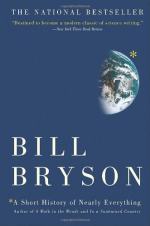
|
| Name: _________________________ | Period: ___________________ |
This test consists of 15 multiple choice questions and 5 short answer questions.
Multiple Choice Questions
1. The skeleton "Lucy" found in Ethiopia in 1974 is thought to come from the hominid species:
(a) Homo habilis.
(b) Australopithecines.
(c) Kenyanthropus platyops.
(d) Sahelanthropus tchadensis.
2. During the Cryogenian period 1.2 billion years ago, Earth was:
(a) Devoid of water.
(b) Highly volcanic.
(c) Without a magnetic field.
(d) Frozen.
3. What percentage of a person's genes are shared with all other humans?
(a) 72.8.
(b) 99.9.
(c) 80.5.
(d) 65.7.
4. Alan Thorne's multiregional hypothesis asserts that modern man evolved from:
(a) Ongoing movement between cultures and regions.
(b) Seven families in seven regions across the globe.
(c) Three primary regions in Africa.
(d) Four primary regions in northern Asia.
5. What is the highest elevation that humans are able to live and survive on Earth continuously without special accommodations?
(a) 22,000 feet.
(b) 14,000 feet.
(c) 18,000 feet.
(d) 27,000 feet.
6. In what year did Charles Darwin publish his famous book on natural selection called "On The Origin Of Species"?
(a) 1891.
(b) 1859.
(c) 1775.
(d) 1913.
7. Approximately how many bacteria live on a square centimeter of human skin?
(a) 4,000,000.
(b) 7,500.
(c) 350.
(d) 100,000.
8. The dodo was a:
(a) Miniature whale.
(b) Large rodent.
(c) Three-footed lizard.
(d) Flightless bird.
9. Scientists believe that our planet is currently in a period of what?
(a) Relative warmth within an ice age.
(b) Declining temperatures.
(c) Relative cold within a temperate age.
(d) Steadily increasing temperatures.
10. Scientists now believe that life began on Earth how long ago?
(a) 7.35 trillion years.
(b) 5.75 million years.
(c) 6.25 thousand years.
(d) 3.85 billion years.
11. Somewhere between three and two million years ago, how many hominid species co-existed before vanishing abruptly?
(a) Six.
(b) Nine.
(c) Two.
(d) Twelve.
12. What was the HMS Beagle, and how was it related to Charles Darwin?
(a) A microscope given to him by his wife.
(b) A hot-air balloon he used to survey the land.
(c) A ship he travelled on, collecting specimens.
(d) A laboratory created for him by the king.
13. With so many hominid species existing in the past, why did only one survive?
(a) Larger brain.
(b) Greater capacity for compassion.
(c) Nobody knows.
(d) Climate change.
14. Scientist Jean de Charpentier was a specialist on what?
(a) Evolution.
(b) Volcanoes.
(c) Glaciers.
(d) Tsunamis.
15. Bacteria take nitrogen from the air and form it into what?
(a) Fluoride.
(b) Water.
(c) Nitric oxide.
(d) Amino acids.
Short Answer Questions
1. The last chapter of the book is a cautionary analysis of man's irresponsibility with regards to the:
2. Mitochondria convert food and oxygen into ATP, which is what?
3. What percentage of all existing water is fresh water?
4. Regarding species that have gone extinct, scientists generally:
5. Compared to at sea level, oxygen at a few thousand feet above sea level is:
|
This section contains 443 words (approx. 2 pages at 300 words per page) |

|




